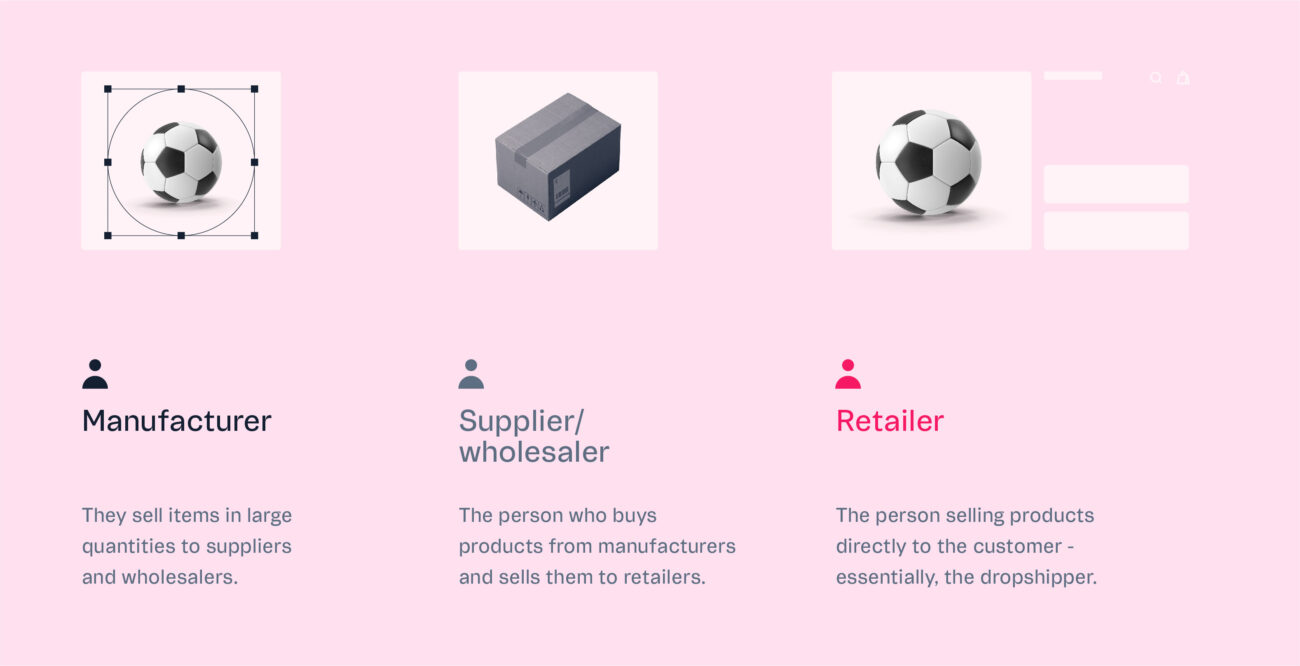
When it comes to upkeeping an ecommerce business operation, several key factors must be taken into account, especially the ones that involve stock management, logistics and last-mile delivery – not just product availability or a good promotion for clients. A dropshipping business model is a tool that helps with ecommerce operations, improving them and adding value to what is supposed to be a well-rounded and detailed system.
Today, approximately 27% of online retailers are using dropshipping as an alternative source of income for many people due to economic changes. In this article, we will go over what a dropshipping business is, its benefits, how it works and also what to keep an eye out for – whether you are a seller or are looking to start selling.
Basically, it is an order fulfillment method that uses a third-party seller as a shipping agent, making it so that businesses do not have to keep products in stock. By adopting this model, the online store is only responsible for selling the product, while packing, last-mile delivery and all logistics involved are the responsibility of another person or company.
Here is a quick example: a jewelry small business owner has over 100 SKUs logged in their website, but he or she runs the operation from home with a small group of people and without a big structure. So instead of keeping all stock in-house (or even at a rented space), the owner can look for third-party sellers to process and ship the product to the customer.
It is a two-way street: sellers can benefit from the convenience and the cost-reduction that comes from outsourcing logistics, while others seize the opportunity to monetize by selling third-party products.
But as with any kind of business, it comes with benefits and points of caution for both parts, which we deep-dive below.
Now that you know what drop shipping business is and are familiar with its nuances, let’s look at the process itself. Check out how the supply chain works:

It’s simple to get started with a dropshipping store. Many ecommerce platforms and other suppliers offer a quick onboarding for anyone who might be interested in it. Plus, with how easy it is to get started, there is more time left to work on strategies to bring suppliers and manufacturers closer to your business.
With this business model, the only thing you have to worry about is the step by step of logistics operation, going from stock management to picking, packing, and processing products, and finally sending them off to the waiting customer. This goes both ways, as the business owner also benefits from the free time of outsourcing last-mile delivery.
The beauty of a dropshipping business is that someone else takes care of the shipping for you. And the freedom that comes with that is being able to sell different products wherever your company is located – but this should not limit you. With it, you can offer shipping to anywhere in the world as long as the costs are worth it.
Everyone wishes they could predict the future. Especially those who work with ecommerce brands, facing market fluctuations and being hit head-on with surprise at every corner. Overstocking costs are a real pain point, so being able to deploy shipping to someone else can save money without losing sales by not offering enough products.
Similar to the topic above, predictions go beyond just ordering enough products and correctly managing the finance of your stock. Instead of betting blindly on an untested and unpredictable product, use dropshipping for a trial period. Then you will see if it sells enough and how much to buy in case of the next release.
Being a third-party seller gives you little to no control over the customization of products, labels, boxes and other shipping items. Like ghostwriters or behind-the-scenes songwriters, dropshippers must understand that the credit for their work goes to someone else.
If whatever product you’re selling is so amazing, your customers are going to focus mostly on the product’s brand and forget about the shopping experience entirely – but it does make too much of a difference because the end-to-end customer journey is extremely important, above all. After all, it’s not your logo on the box.
There is a lot of competition when it comes to establishing a good and trustworthy business. Low prices are a good way out of this, which can cause a slow start, but in the future, you can build up trust and reassurance through marketing and sales strategies.
In standard ecommerce, if customers complain about product quality, fulfillment speed or return policies, you can address the problems yourself. In dropshipping, you’re more or less at the mercy of your supplier — but you’re the one who still has to talk to your customers directly.
It’s great that you don’t have to deal with inventory management yourself until you get a complaint from an angry customer. When the suppliers fail with your orders, you’re the one who takes the blame. Be ready to apologize deeply and provide excellent customer service to avoid getting negative reviews.
The future is global and collaborative – especially when it comes to ecommerce stores, old and new! Investing in dropshipping, whether it’s outsourcing or becoming one, highlights this aspect of digital commerce.
There are different ways to start a dropshipping business. Whether it’s with a specific product or a range of products, it is a long-term deal that with patience, care and the right kind of research and investment can be profitable to everyone involved. When it comes to tools, ecommerce platforms provide all kinds of mechanisms designed to improve in various areas.
For instance, here at VTEX, the customers are able to connect to sellers and, by leveraging our native Order Management System, orchestrate their operations: manage the logistics of orders, view the order flow and the order status, and more.

